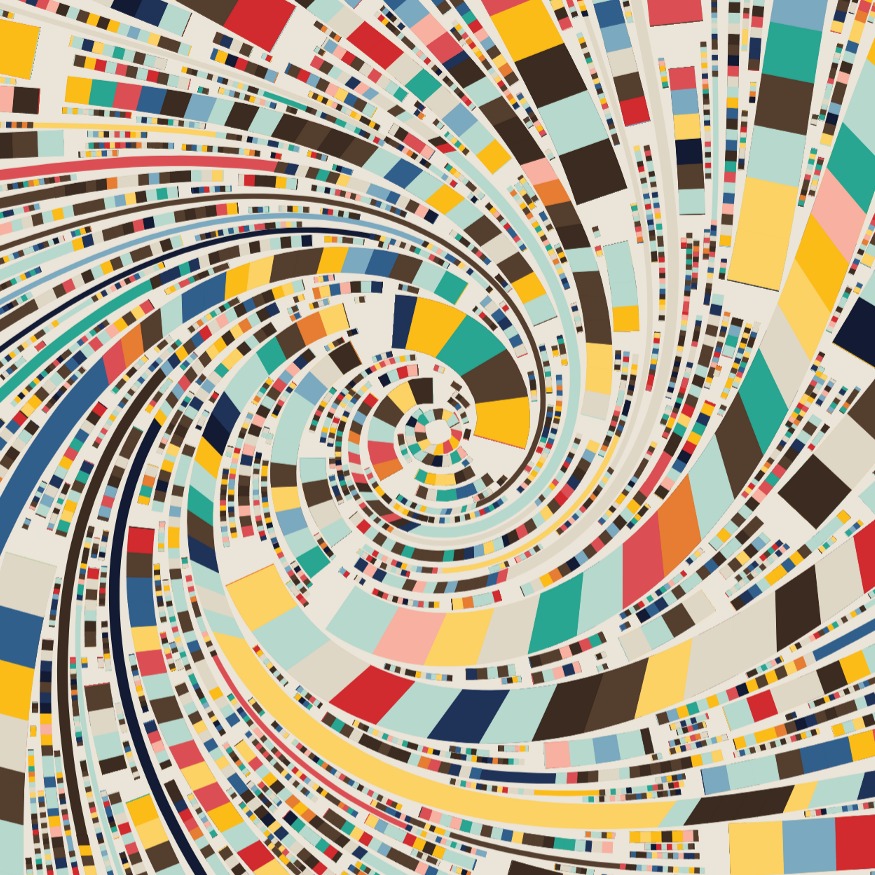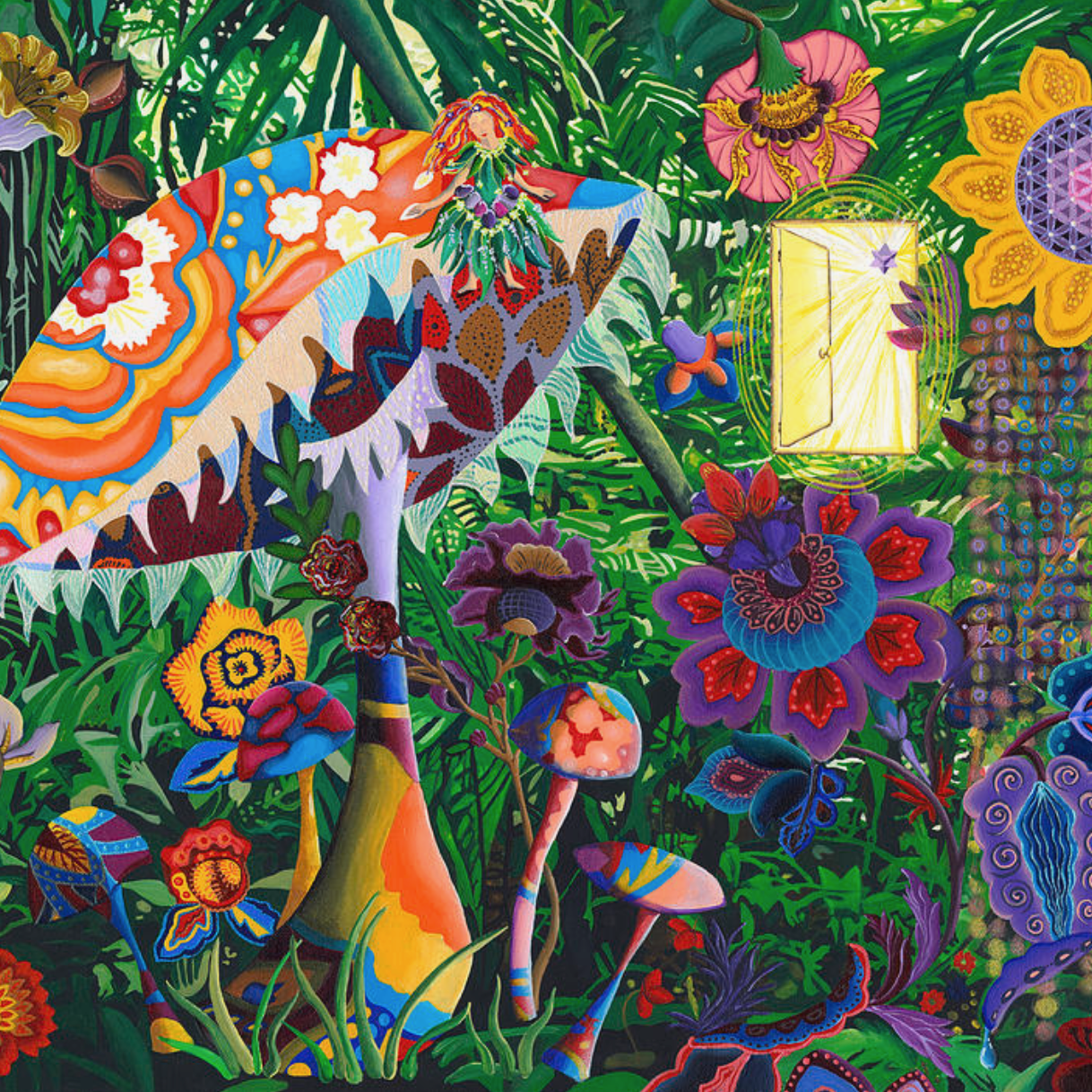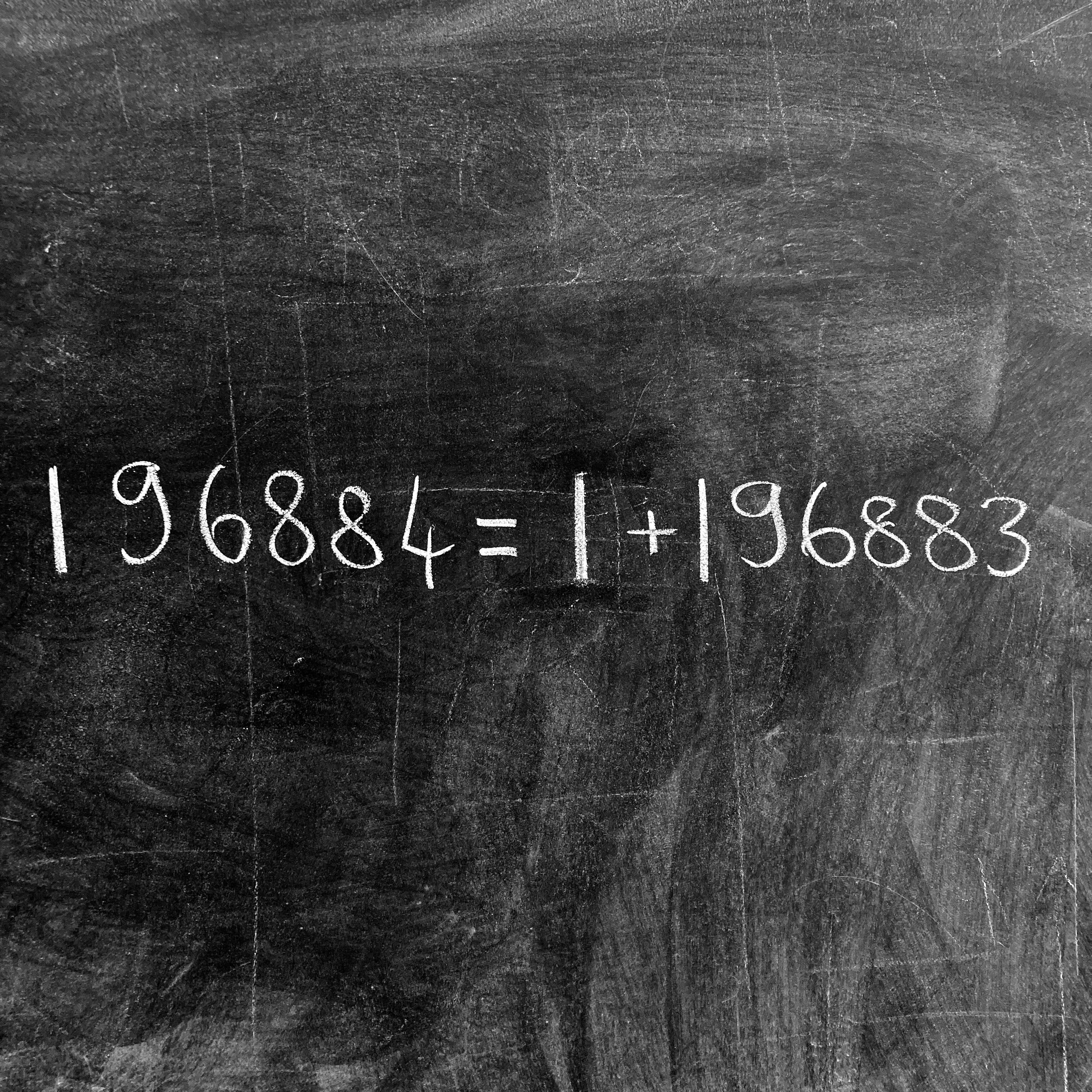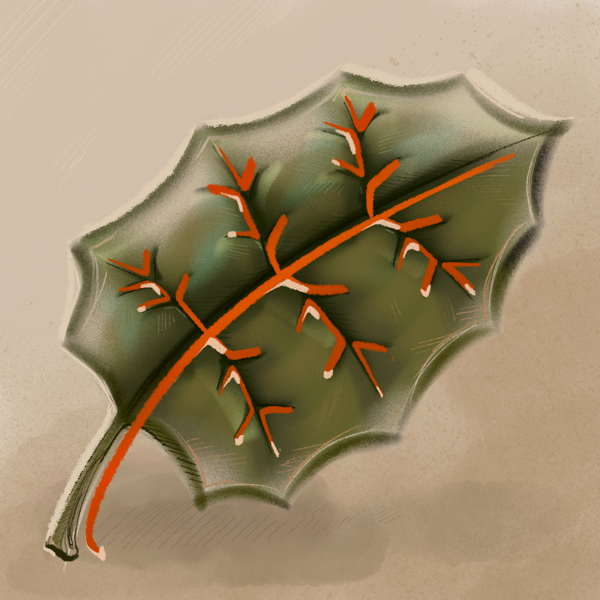Our goal is to boost our research output for 2023 by √2 over our previous year. We measure our research output by SNIP points, which are described in our Journals page. Help us reach our target of 28 points for this year.
Arxiv

Theory of innovation
Recursive structure of innovation
A theoretical model of recursive innovation suggests that new technologies are recursively built up from new combinations of existing ones.

Number theory
Higher energies
Generalising the recent Kelley–Meka result on sets avoiding arithmetic progressions of length three leads to developments in the theory of the higher energies.

High energy physics
Topological dark matter
Sterile neutrinos are replaced by topological order as dark matter candidates to counterbalance the Standard Model’s gravitational anomalies.
Algebraic geometry
Slight degenerations
The tools used to study polynomial equations with indeterminate coefficients are extended to some important cases with interrelated ones.
Algebraic geometry
Schön complete intersections
A uniform approach to a class of varieties is described that includes important types of objects from geometry, optimisation and physics.
Number theory
Ample and pristine numbers
Parallels between the perfect and abundant numbers and their recursive analogs point to deeper structure in the recursive divisor function.
Algebraic geometry
Symmetric spatial curves
We study the geometry of generic spatial curves with a symmetry in order to understand the Galois group of a family of sparse polynomials.
Number theory
Recursive divisor properties
The recursive divisor function has a simple Dirichlet series that relates it to the divisor function and other standard arithmetic functions.
Evolvability
Flowers of immortality
The eigenvalues of the mortality equation fall into two classes—the flower and the stem—but only the stem eigenvalues control the dynamics.
AI-assisted maths
Learning integrability
We introduce an AI-based framework for finding solutions to the Yang-Baxter equation and discover hundreds of new integrable Hamiltonians.
Quantum physics
Regularising CRT
Charge conjugation C, space reflection R, and time-reversal T operators are regularised in a quantum many-body Hilbert space on a discrete lattice.
Condensed matter theory
Counting free fermions
We link the statistical properties of one-dimensional systems of free fermions initialised in states of either half- or alternating-occupancy.
Computational linguistics
Cross-lingual knowledge
Models trained on a Russian topical dataset, of knowledge-grounded human-human conversation, are capable of real-world tasks across languages.
High energy physics
An 8-fold way for CRT
Varying the spacetime dimensions fermions occupy shows charge-conjugation C, space-reflection R and time-reversal T symmetries are 8-fold periodic.
Machine learning polytopes
A supervised machine of learning lattice polytopes predicts properties of volume, dual volume, and reflexivity with up to 100% accuracy.
Machine learning
Boosting AI reasoning
By increasing the effective depth of neural networks, we improve their sequential reasoning abilities in tasks involving cellular automata.
Machine learning
Limits of attention
We demonstrate that transformer attention can only discriminate well at shorter context lengths, losing clarity as input length increases.
High energy physics
Topological responses
Fractional conductivity between the nuclear and electromagnetic higher symmetries reveals four global Lie gauge groups of the Standard Model.
Representation theory
Group representations
A general approach to proving the irreducibility of representations of infinite-dimensional groups within the frame of Ismagilov's conjecture.
Condensed matter theory
Topological boundary
We show that Weyl fermions and anomalous topological order in 4 dimensions can live on the edge of the same 5-dimensional superconductor.
Algebraic geometry
Linearising actions
We give a solution of the linearisation problem in the Cremona group of rank two over an algebraically closed field of characteristic zero.
High energy physics
A new leptogenesis
We propose that dark matter consists of topological order, so gapped anyon excitations decay to generate the Standard Model's lepton asymmetry.
Submitted

Synthetic biology
Cell soup in screens
Bursting cells can introduce noise in transcription factor screens, but modelling this process allows us to discern true counts from false.

Combinatorics
In life, there are few rules
The bipartite nature of regulatory networks means gene-gene logics are composed, which severely restricts which ones can show up in life.

Combinatorics
Structure of genetic computation
The structural and functional building blocks of gene regulatory networks correspond, which tell us how genetic computation is organised.

Combinatorics
Biological logics are restricted
The fraction of logics that are biologically permitted can be bounded and shown to be tiny, which makes inferring them from experiments easier.
Evolvability
I want to be forever young
The mortality equation governs the dynamics of an evolving population with a given maximum age, offering a theory for programmed ageing.
Combinatorics
Representation for sum-product
A new way to estimate indices via representation theory reveals links to the sum-product phenomena and Zaremba’s conjecture in number theory.
Number theory
Bounding Zaremba’s conjecture
Using methods related to the Bourgain–Gamburd machine refines the previous bound on Zaremba’s conjecture in the theory of continued fractions.
Algebraic geometry
Permuting the roots
The Galois group of a typical rational function is described and similar problems solved using the topology of braids and tropical geometry.
Number theory
Counting recursive divisors
Three new closed-form expressions give the number of recursive divisors and ordered factorisations, which were until now hard to compute.
Quantum physics
Towards optimal control
Time-optimal control of large quantum systems is computed efficiently by applying boundary conditions to a brachistochrone–Lax framework.
Algebraic geometry
Sparse singularities
Geometric properties, including delta invariants, are computed for singular points defined by polynomials with indeterminate coefficients.
AI-assisted maths
Learning to be simple
Neural networks classify simple finite groups by generators, unlike earlier methods using Cayley tables, leading to a proven explicit criterion.
Algebraic geometry
Analysing the vacuum
Birational methods in algebraic geometry are used to explicitly describe the vacuum structure of the Minimal Supersymmetric Standard Model.
From words to blocks
Combining a language model with reinforcement learning enables object construction in a Minecraft-like environment from natural language instructions.
AI-assisted maths
Convolution in topology
Using Inception, a convolutional neural network, we predict certain divisibility invariants of Calabi-Yau manifolds with up to 90% accuracy.
Published

Machine learning
Guided by uncertainty
A new two-stage method addresses challenges in the natural language processing of long texts using transformers with self-attention mechanisms.

Statistical physics
Kauffman cracked
Surprisingly, the number of attractors in the critical Kauffman model with connectivity one grows exponentially with the size of the network.

Number theory
Multiplicativity of sets
Expanding the known multiplicative properties of large difference sets yields a new, quantitative proof on the structure of product sets.

Group theory
On John McKay
This obituary celebrates the life and work of John Keith Stuart McKay, highlighting the mathematical miracles for which he will be remembered.
Linear algebra
Infinite parallelotope
We study the geometry of finite dimensional space as the dimension grows to infinity with an accent on the height of the parallelotope.
Combinatorics
Quadratic residues
Additive combinatorics sheds light on the distribution of the set of squares in the prime field, revealing a new upper bound for the number of gaps.
Combinatorics
Ungrouped machines
A new connection between continued fractions and the Bourgain–Gamburd machine reveals a girth-free variant of this widely-celebrated theorem.
Combinatorics
Set additivity and growth
The additive dimension of a set, which is the size of a maximal dissociated subset, is closely connected to the rapid growth of higher sumsets.
Statistical physics
Multiplicative loops
The dynamics of the Kauffman network can be expressed as a product of the dynamics of its disjoint loops, revealing a new algebraic structure.
Number theory
Recursively divisible numbers
Recursively divisible numbers are a new kind of number that are highly divisible, whose quotients are highly divisible, and so on, recursively.
AI-assisted maths
Free energy and learning
Using the free energy principle to derive multiple theories of associative learning allows us to combine them into a single, unifying framework.
Number theory
Random Chowla conjecture
The distribution of partial sums of a Steinhaus random multiplicative function, of polynomials in a given form, converges to the standard complex Gaussian.
Combinatorics
The popularity gap
A cyclic group with small difference set has a nonzero element for which the second largest number of representations is twice the average.
Machine learning
The limits of LLMs
Large language models like ChatGPT can generate human-like text but businesses that overestimate their abilities risk misusing the technology.
General relativity
Absorption with amplitudes
How gravitational waves are absorbed by a black hole is understood, for the first time, through effective on-shell scattering amplitudes.
AI-assisted maths
AI for arithmetic curves
AI can predict invariants of low genus arithmetic curves, including those key to the Birch-Swinnerton-Dyer conjecture—a millennium prize problem.
Machine learning
Neurons on amoebae
Machine-learning 2-dimensional amoeba in algebraic geometry and string theory is able to recover the complicated conditions from so-called lopsidedness.
Computational linguistics
Better together
Knowledge graph completion methods based on language models are boosted by adding information on the neighbourhoods of nodes to the graph.
Machine learning
DeepPavlov dream
A new open-source platform is specifically tailored for developing complex dialogue systems, like generative conversational AI assistants.
Machine learning
Speaking DNA
A family of transformer-based DNA language models can interpret genomic sequences, opening new possibilities for complex biological research.
Quantum field theory
Peculiar betas
The beta function for a class of sigma models is not found to be geometric, but rather has an elegant form in the context of algebraic data.
String theory
World in a grain of sand
An AI algorithm of few-shot learning finds that the vast string landscape could be reduced by only seeing a tiny fraction to predict the rest.
Gravity
Black hole symmetry
Effective field theories for Kerr black holes, showing the 3-point Kerr amplitudes are uniquely predicted using higher-spin gauge symmetry.
Condensed matter theory
Mobile impurity
Explicit computation of injection and ejection impurity’s Green’s function reveals a generalisation of the Kubo-Martin-Schwinger relation.
Algebraic geometry
Bundled Laplacians
By approximating the basis of eigenfunctions, we computationally determine the harmonic modes of bundle-valued Laplacians on Calabi-Yau manifolds.
Condensed matter theory
Spin diffusion
The spin-spin correlation function of the Hubbard model reveals that finite temperature spin transport in one spatial dimension is diffusive.
Algebraic geometry
Analysing amoebae
Genetic symbolic regression methods reveal the relationship between amoebae from tropical geometry and the Mahler measure from number theory.
AI-assisted maths
AI for cluster algebras
Investigating cluster algebras through the lens of modern data science reveals an elegant symmetry in the quiver exchange graph embedding.
AI-assisted maths
Learning 3-manifolds
3-manifolds represented as isomorphism signatures of their triangulations and associated Pachner graphs are analysed with machine learning.
Machine learning
BERT enhanced with recurrence
The quadratic complexity of attention in transformers is tackled by combining token-based memory and segment-level recurrence, using RMT.
Number theory
Elliptical murmurations
Certain properties of the bivariate cubic equations used to prove Fermat’s last theorem exhibit flocking patterns, machine learning reveals.
Condensed matter theory
Spin-charge separation
A transformation for spin and charge degrees of freedom in one-dimensional lattice systems allows direct access to the dynamical correlations.
Algebraic geometry
Genetic polytopes
Genetic algorithms, which solve optimisation problems in a natural selection-inspired way, reveal previously unconstructed Calabi-Yau manifolds.
AI-assisted maths
Clustered cluster algebras
Cluster variables in Grassmannian cluster algebras can be classified with HPC by applying the tableaux method up to a fixed number of columns.
AI for real quadratic fields
Supervised learning experiments involving real quadratic fields lead to machine-learned formulas for class numbers 1, 2 and 3, for our dataset.
AI-assisted maths
Computing Sasakians
Topological quantities for the Calabi-Yau link construction of G2 manifolds are computed and machine learnt with high performance scores.
AI-assisted maths
Clifford invariants by ML
Coxeter transformations for root diagrams of simply-laced Lie groups are exhaustively computed then machine learned to very high accuracy.
